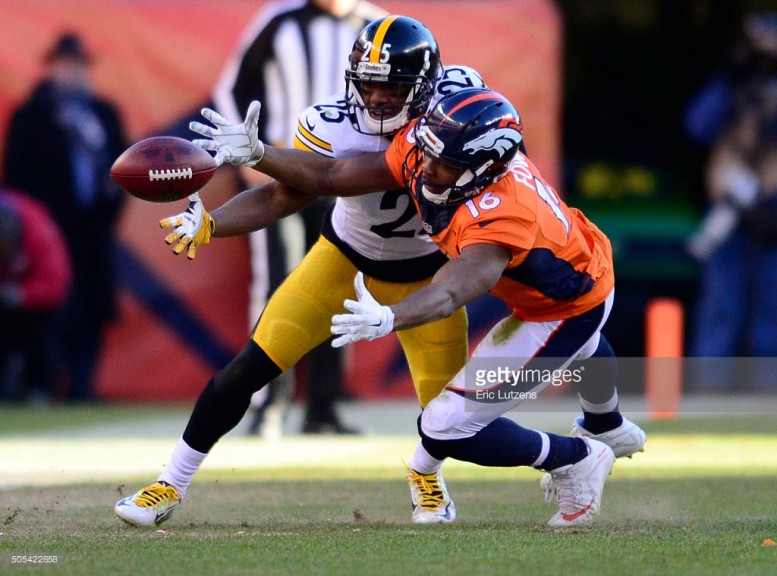The big news around western Pennsylvania yesterday came in the form of the Panthers coming to terms with former Pittsburgh Steelers cornerback Brandon Boykin, who spent about seven months in the black and gold after being traded for in early August in the early portions of training camp.
Perceived as early as his sophomore season to be a coveted rising cornerback after he intercepted six passes, Boykin’s playing time declined in 2014 under Chip Kelly in Philadelphia, who ultimately made him available for trade, with the Steelers eventually biting to the tune of a conditional fifth-round pick just as the preseason was approaching.
Boykin’s brief tenure with the team has been among the more bizarre focal points of interest in recent years, with my personal favorite being the theory that the coaching staff limited his playing time in order to keep him below the 60-percent-snaps threshold that would raise the conditional fifth-round pick compensation to a fourth-round compensation.
Ignoring the fact that he did not even reach half of the requisite number of snaps, and the fact that Boykin himself has stated that he believes this to be the case, the more important discussion to be had is the notion of the way that the cornerback was ‘handled’ by the Steelers, with many individuals speaking as though the athlete was taken advantage of by Pittsburgh’s coaching staff.
Even Boykin yesterday alluded to his own personal belief that he was not treated “fairly”, and insinuated that “what happened in [Pittsburgh] surely didn’t help” his market value after even his best reported offer came in well below what many expected his services to command on the open market.
Brandon Boykin was in no way mistreated, taken advantage of, misled, manipulated, marginalized or abused during his time with the Steelers, regardless of what others, or even he, might think. Everybody, including Boykin, is entitled to their own opinions, but we are not entitled to our own reality, and we all share the same facts.
The fact is that Boykin was owed nothing in being traded for by the Steelers. Pittsburgh acquired him after learning that their rookie cornerback, Senquez Golson, would be unavailable to them. There was never any explicit suggestion that Boykin was acquired for anything other than providing much-needed depth.
Recall at the time, of course, that Ross Cockrell would not become available for several more weeks. The Steelers opened the regular season with William Gay, Antwon Blake, and Cortez Allen. Allen got injured in the opener. Had they not traded for Boykin, their next man up by that point would have been either rookie Doran Grant or B.W. Webb—perhaps Kevin Fogg.
After Allen’s injury, Boykin suffered a groin injury and missed much of the following week of practice, but he was still given two series—as an outside cornerback—the following week, playing 11 snaps in total. In that span of 11 snaps, he recorded one pass deflection, but he also slipped twice and allowed a touchdown.
He did not receive much playing time after that until after the Steelers’ bye week, following a cataclysmic secondary meltdown against the Seahawks in which they allowed five passing touchdowns that prompted the team to shake things up and begin mixing in Boykin.
Pittsburgh’s handling of Boykin requires no conspiracy theories to understand, regardless of whether or not one might disagree with the amount that the Steelers chose to use him until late in the season.
The notion that he was not given a fair chance to play suggests that he was entitled to playing time, when the simple fact is that he was not, and ignores the fact that Cockrell was equally entitled to an opportunity to play—a variable that was not yet even present when he was acquired.






